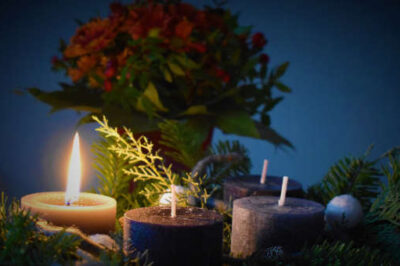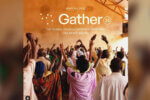Note: This is the first of a four-part series.
These weeks before the celebration of Christmas are known in Christian liturgy as the Advent season. The term comes from the Latin advenio, meaning “to come to,” and its observance is meant to keep believers focused on the hope of our Lord’s future Second Coming, while special decorations, programs and parties celebrate His first coming.
The Advent is a multi-week seasonal observance composed of the four Sundays before Christmas in Western countries and runs from Nov. 15-Dec. 24 in the Eastern Orthodox practices.
“During this time, the faithful are admonished to prepare themselves worthily to celebrate the anniversary of the Lord’s coming into the world as the incarnate God of love,” reads one religious encyclopedia of the early 20th century, “thus to make their souls fitting abodes for the Redeemer coming in Holy Communion and through grace, and thereby to make themselves ready for His final coming as judge, at death and at the end of the world.”
Among Christian Protestants, the most common symbol of Advent is a wreath with four candles, one for each Sunday.
The first is the “Prophets’ Candle,” symbolizing the hope for the Messiah’s coming of the Old Testament, found in the anointed, prophetic writings of seers, such as Isaiah, Jeremiah and Haggai.
The second is the “Bethlehem Candle,” named for Christ’s birthplace where his parents had traveled to take part in a required census for taxation (Luke 2:1-7). It stands for faith and encouragement for the small and otherwise insignificant things and people among us, as Micah 5:2 foretold: “But you, Bethlehem Ephrathah, although you are small among the tribes of Judah, from you will come forth for Me one who will be ruler over Israel. His origins are from of old, from ancient days.”
The third candle of Advent is the “Shepherds’ Candle,” representing the joy that the shepherds outside of Bethlehem had at the dramatic announcement of their promised Savior’s birth (see Luke 2:8-20). “But the angel said to them, ‘Listen! Do not fear. For I bring you good news of great joy, which will be to all people'” (Luke 2:10).
The fourth candle in this Advent liturgy is the “Angel’s Candle” or sometimes called the “Peace Candle” for the peace the angels proclaimed with the coming of the Christ child. The heavenly host declared in Luke 2:14, “Glory to God in the highest, and on earth peace, and good will toward men.”
The optional, fifth candle is “Christ’s Candle.” When it is used, it is placed in the center of the wreath, since He is our Creator and central to all “that are in heaven and that are in earth, visible and invisible” (see Col. 1:16b). This candle is white for His purity and lit on Christmas to represent Jesus’ incarnation in that first Advent.
Collectively, these Advent candles remind us that the Son of God “became flesh and dwelt among us” (John 1:14a). This incarnate God in human flesh declared “I am the light of the world. Whoever follows Me shall not walk in the darkness, but shall have the light of life” (John 8:12b).
The last verse of Pastor Jack Hayford’s carol “The Light Has Come” meaningfully affirms these first Advent truths:
“The light has come and to every man life has been revealed, O hallelujah! Tho’ some resist it, they never can overcome its pow’r, O hallelu!/ For God in flesh once walked on the earth as Jesus, Son of man. The splendor of His glory displayed continues—ages to span./ The light has come and to every man life has come to light, O hallelujah! And as it comes unto me I can be renewed in life, O hallelu!” (Jack Hayford, 1980, Living Way Ministries) {eoa}
Gary Curtis served in full-time ministry for 50 years, the last 27 years of which he was part of the pastoral staff of The Church on The Way, the Van Nuys’ California Foursquare church. Now retired, Gary continues to write a weekly blog at worshipontheway.wordpress.com and frequent articles for digital and print platforms.








Leave a Comment
You must be logged in to post a comment.